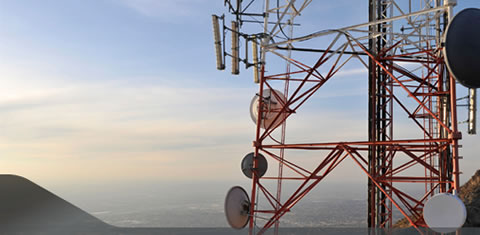
Cellular (3G/4G Offload)
Reduced Infrastructure Costs for 3G/4G LTE Offload
With the market proliferation of content hungry "smart devices", cellular service providers are facing a data capacity crisis that is dramatically challenging their business models. Data service demand now exceeds the capacity of 3G/4G LTE network deployments in urban and rural environments, severely impacting the end-user voice and data experience. Cellular service providers are under intense pressure to increase data speeds to keep up with their customers' demand for mobile data intensive applications. To further complicate the situation, the cost of transporting data is expected to outpace revenue, do in large part to the cost to deploy network architectures. Couple this with poor user experiences resulting from network congestion, and the inevitable byproduct is customer churn. As a result, cellular service providers are seeking cost effective ways to enhance their service through offloading data demands to Wi-Fi architectures, yet providers still struggle with the need to deploy hundreds, if not thousands, of access points.
As mobile operators worldwide plan and deploy 3G/4G LTE networks to support the relentless growth in mobile data demand, a new class of small cell base stations, known as outdoor metropolitan picocells, is gaining traction and was the buzz at the 2011 CTIA and WISPA conferences. According to industry research firm In-Stat, the metropolitan picocell market is forecast to top $5 Billion in 2014. In that same year, more than two billion Wi-Fi chipsets will ship, according to HIS iSuppli. These reports clearly reflect Wi-Fi's continued popularity and integral role in smart phones and tablets, the devices driving mobile data and video consumption.
Against this backdrop of ravenous mobile data demand, 3G/4G LTE small cell adoption and concurrent Wi-Fi enabled device growth; Vivato Technologies presents Wi-Fi's answer to the picocell in the form of its VT2210 Outdoor 802.11b/g 2.4GHz Base Station. Equipped with NEMA 4 hardened protection, the VT2210 can be commissioned within minutes and most importantly mimics the deployment and performance characteristics of 3G/4G LTE.
Thanks to Vivato's robust Wi-Fi signal, improving the range and performance of individual access points by 10x or more, the VT2210 Base Station offers a viable alternative to the old cellular service provider deployment model, installing and performing like 3G/4G LTE picocells. In addition, a seamless subscriber roaming experience is ensured through integration of class leading AP interference tolerance. Vivato's technology addresses many of the concerns carriers face when integrating Wi-Fi within the large mobile operator infrastructure. Vivato's patented beamforming phased array antenna design and Packet Steeringª technology work in conjunction to deliver improved throughput up to 3 miles with less coverage gaps and mitigated noise floor concerns. With a 1:30 ratio for carrier to mesh deployments, Vivato now frees carriers to utilize existing tower infrastructures for easy deployment; and a single Vivato deployment of 4 switches can cover over 7 square miles.
Vivato has been deploying Wi-Fi solutions products to offload data traffic networks for years, with over 400 deployments globally. Leveraging this expertise, Vivato's VT2210 Outdoor Base Station enables mobile carriers to quickly and cost-effectively build large-scale networks with capacity and coverage that cannot be matched by any class of Wi-Fi.
Vivato Carrier-Class Wi-Fi Solutions offer:
- 10X+ improvement in distance, throughput, range and noise floor abatement
- Stable connectivity and consistent performance through interference rejection technology
- Backhaul flexibility — (5.8GHz., 3.65GHz and now 23 GHz and Blackbox for fiber to Ethernet conversion)
- Unlicensed phased array access radios — Utilizing our patented beamforming and Packet Steering™ technologies
- Multiple mounting options — pole and wall-mount pedestal, cabinet or fiber coax infrastructure (Vivato's DOCSIS solution)
- Powering via AC, DC -48V POE
- NEMA 4 enclosures and power supplies for any and all environmental conditions

